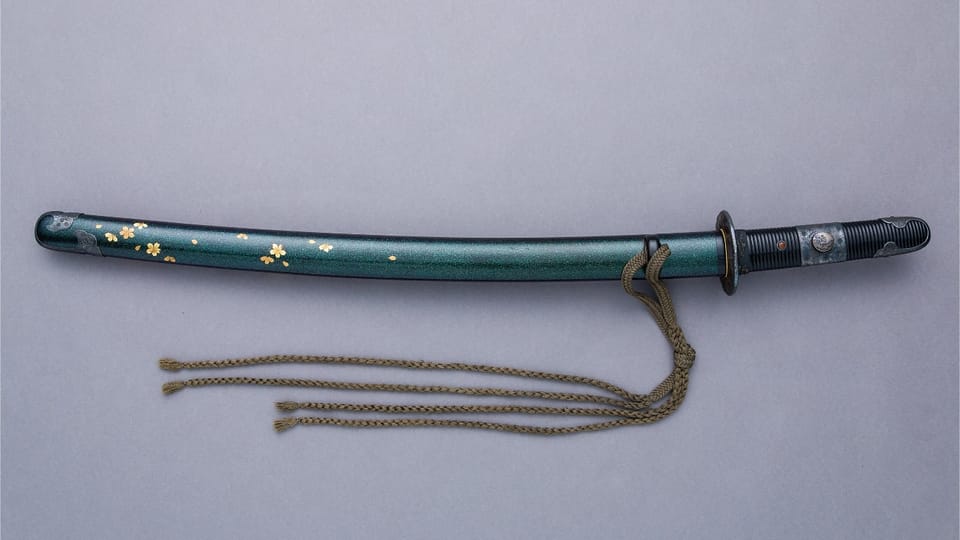The Wakizashi: The Lesser-Known Companion Sword of the Samurai

Everyone knows the katana, right? That sleek, mean sword that’s become the poster child of samurai weaponry. But let me tell you about the wakizashi—a shorter but just as badass blade that doesn’t get nearly the attention it deserves. This isn’t some sidekick sword, alright? The wakizashi is a symbol of a warrior’s status, a tool of survival, and a weapon of deadly precision. Let’s dig into its history, how it’s built, why it’s culturally significant, and why this underrated sword should get the same love as its big brother, the katana.
So, here’s the deal. The wakizashi is a traditional Japanese blade, usually measuring between 12 and 24 inches. It hit the scene back in the Muromachi period (1336–1573) and became even more prominent through the Sengoku period and the Edo period. Samurai had this thing going where they carried both the katana and the wakizashi. Together, they were called the daishō. The katana was the “soul” of the samurai, but the wakizashi? That was the trusty sidearm, always ready for the real dirty work.
Now, let’s talk shop. The wakizashi is like the katana’s scrappy little brother. It’s got the same curved blade, a single sharp edge, and either a round or squared handguard (we call that a tsuba). The grip (tsuka) is long enough for two hands, but usually, you’re going one-handed with this bad boy. The blade’s made using that classic folding technique called tamahagane, where you fold the steel again and again, making it tough as hell but flexible when it counts.
The wakizashi’s size makes it perfect for up-close-and-personal combat. When you’re fighting in tight spaces, you don’t want a massive sword getting in your way. And the blade style? You could go shinogi-zukuri with a ridge line or hira-zukuri without one. This was all about the samurai’s taste and how they planned to use the sword. Plus, these hilts were decked out—rayskin wraps, silk or cotton cords—the works. It was as much about showing off as it was about staying alive.
But here’s the kicker: the wakizashi wasn’t just about slicing and dicing. It had deep cultural roots. This blade was the go-to for seppuku—ritual suicide by disembowelment, a final act of honor. If a samurai screwed up big time, the wakizashi was their ticket to reclaiming their honor. And beyond that, it was a straight-up status symbol. Commoners couldn’t carry swords, but samurai? They rocked both the katana and wakizashi to show they were a cut above. Inside, outside—katana stays out, but the wakizashi goes everywhere, earning its nickname, the “inside sword.”
On the battlefield, the wakizashi was no sidekick. It was a versatile beast, especially when things got tight. Picture this: you’re indoors, cramped, enemies on all sides. A katana would be a pain to maneuver, but the wakizashi? Perfect for quick draws and fast strikes. And if your katana gets knocked away or breaks? The wakizashi’s got your back, stepping up as the second line of defense. Some samurai were even pros at using both swords at once—Niten Ichi-ryū style—made famous by the legendary Miyamoto Musashi. That kind of skill makes you deadly on the battlefield, combining power and speed in every swing.
But it wasn’t all blood and battle. In everyday life, the wakizashi was just as handy. Cutting ropes, prepping food, even ending it all when defeat was staring them in the face—this sword did it all. It wasn’t just a weapon; it was a tool of survival, showcasing the samurai’s adaptability and readiness for any situation.
Don’t think for a second that the wakizashi was some mass-produced junk. The craftsmanship was off the charts. Swordsmiths put their souls into these blades, folding and hammering the steel, tempering it just right, then polishing it to a mirror shine. Every step took mad skill and precision, reflecting the values of the samurai. And those fittings? Handguards, pommels, grip ornaments—they weren’t just for show. They told stories, showing off the samurai’s family crests, beliefs, and personal flair. Some went with fierce animals or mythical beasts, while others kept it simple and classy.
Fast forward to today, and the wakizashi still holds a place of honor. It’s a symbol of Japan’s deep cultural roots and the lasting legacy of the samurai. Collectors and martial artists study these blades for their historical value, craftsmanship, and versatility. In martial arts like Iaido and Kendo, the wakizashi is a key player, used for close-quarters combat training and refining swordsmanship skills.
Museums and private collections around the world showcase wakizashi blades, not just as beautiful objects, but as historical artifacts that tell the tales of warriors who lived and died by the sword.
Here’s the bottom line: the wakizashi might not get the spotlight like the katana, but it’s just as essential in the story of Japan’s samurai. It’s more than a weapon—it’s a symbol of honor, a tool of survival, and a piece of art. The wakizashi stands strong as a testament to the enduring spirit of the samurai—warriors who balanced the edge between life and death, honor and survival, tradition and change.
